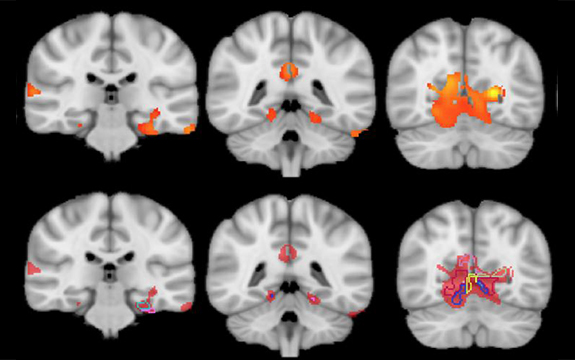Swinburne research shows cannabis use in teens associated with brain volume

In Summary
- Low-level cannabis use in adolescents may have an effect on grey matter volume
- First study of its kind looking at teens who have used cannabis once or twice
- This research will be used to identify risk factors for cannabis use resulting in increased grey matter volume
Swinburne research has found low-level cannabis use in adolescents may have an effect on the amount of grey matter volume found in their brains.
In a first-of-its-kind study, Swinburne cognitive neuroscience lecturer, Dr Catherine Orr, compared the grey matter volume in a group of 46 14-year-olds who had only used cannabis once or twice with a control group of teens who had never used the drug.
The research, completed with Professor Hugh Garavan at the University of Vermont in the US, has shown that teens who used cannabis just once or twice have more grey matter volume than their cannabis-naïve counterparts.
“Typically, grey matter volume decreases over the course of adolescence. During adolescent development, the brain goes through a period of maturation that involves losing grey matter volume and gaining white matter volume, allowing parts of the brain to come together and become more coordinated,” Dr Orr says.
“Delay or disruption to the typical trajectory of this neural pruning process has been associated with ADHD symptoms and with poor emotional regulation.”
Understanding the impact of recreational use
Dr Orr says most existing research studying cannabis use looks at adults with heavy patterns of use, who have typically been using over a long period of time.
“It’s fairly well-accepted that chronic, long-term cannabis use has implications for brain structure and possibly for mood and cognition as well,” she says.
“While this is important information to have, it doesn’t actually represent the way most people use cannabis, which is recreationally. Many adolescents experiment with substances such as cannabis, however we don’t know what the consequences of that use are as it is a much understudied area.”
Future applications of the study
Dr Orr’s research has also shown there is a range of effects within the group of cannabis-using teens, which could be related to cognition and emotion.
“There are differences in how much people’s brains are affected and in this sample of adolescents, the extent to which they’re affected seems to be related to individuals’ cognition and emotion,” she says.
Using data gathered from this study, Dr Orr hopes to identify the factors that put people more at risk of having a brain that responds to cannabis in this way.
“What’s most interesting to me is trying to find out why some people have this response and some people don’t, or why some show it to a greater degree than others,” she says.
“It’s important to make sure people have enough information to make informed decisions about their substance use. If we know there are some people who are more vulnerable to the brain effects of cannabis, we need to let people know what those risk factors are so they can make informed decisions.”

